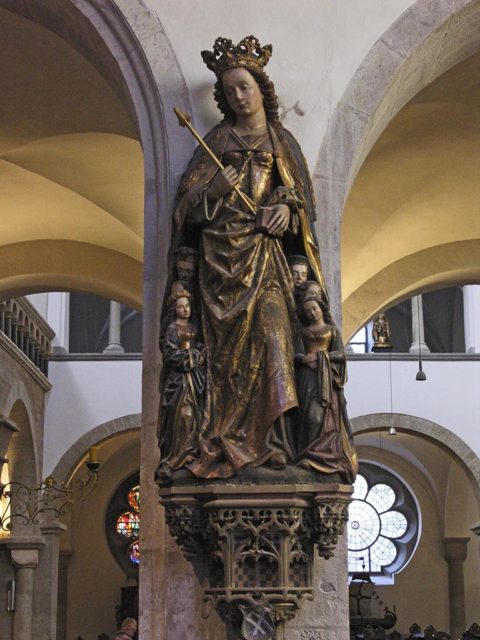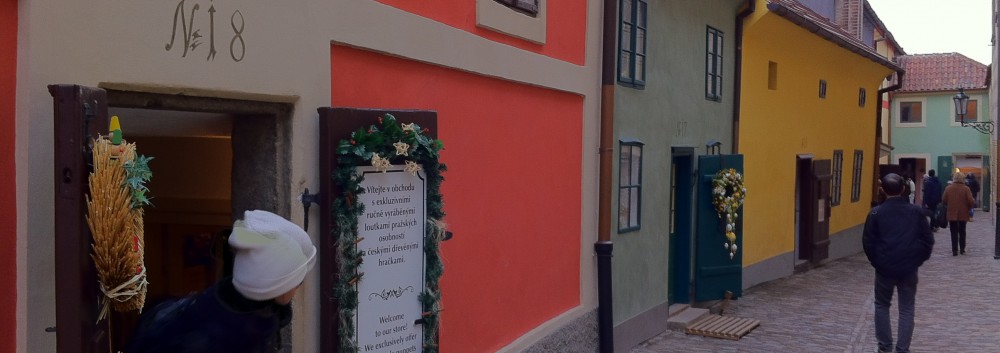
Statue of St. Ursula and her companions (clustered together beneath her cloak) in the church of St. Ursula in Cologne.
St. Ursula (Latin for “little bear”) was among the most popular saints of Western Europe during the Middle Ages. She and her companions–later versions of her life story report that she had 11,000 women with her although there were doubtless a much smaller group of women actually with her, probably 11 that was later expanded by a error in transcription–travelled to Cologne from Wales and were martyred in Cologne; there are records indicating that the women were executed AD 400.
The church of St. Ursula in Cologne is Romanesque, built in the 11th century atop the ancient ruins of a Roman cemetery, where the virgins associated with Saint Ursula are said to have been buried. The church has an impressive reliquary created from the bones of the former occupants of the cemetery. It is one of the twelve Romanesque churches of Cologne and was designated a basilica in the canonical, if not architectural, sense in June 1920.
The “Golden Chamber” of the church contains the remains of St. Ursula and her companions who are said to have been killed by the Huns. The walls of the Golden Chamber are covered in bones arranged in designs and letters along with relic-skulls. The exact number of people whose remains are in the Golden Chamber remains ambiguous but the number of skulls in the reliquary is greater than 11 and less than the 11,000. These remains were found in 1106 in a mass grave and were assumed to be those of the legend of St. Ursula and the virgins. Therefore, the church constructed the Golden Chamber to house the bones.
The small village of Llangwyryfon, near Aberystwyth in west Wales, has a church dedicated to St. Ursula. The village name translates as ‘Church of the Virgins’. She is believed to have come from this area. The Order of Ursulines, founded in 1535 by Angela Merici, and devoted to the education of young girls, has also helped to spread Ursula’s name throughout the world. St. Ursula was named the patron saint of school girls.
It has been theorized that the character of St. Ursula is a Christianized form of the Norse goddess Freya, who welcomed the souls of dead maidens. Other 19th-century scholars have referred to the goddesses Nehalennia, Nerthus and Mother Holda.
